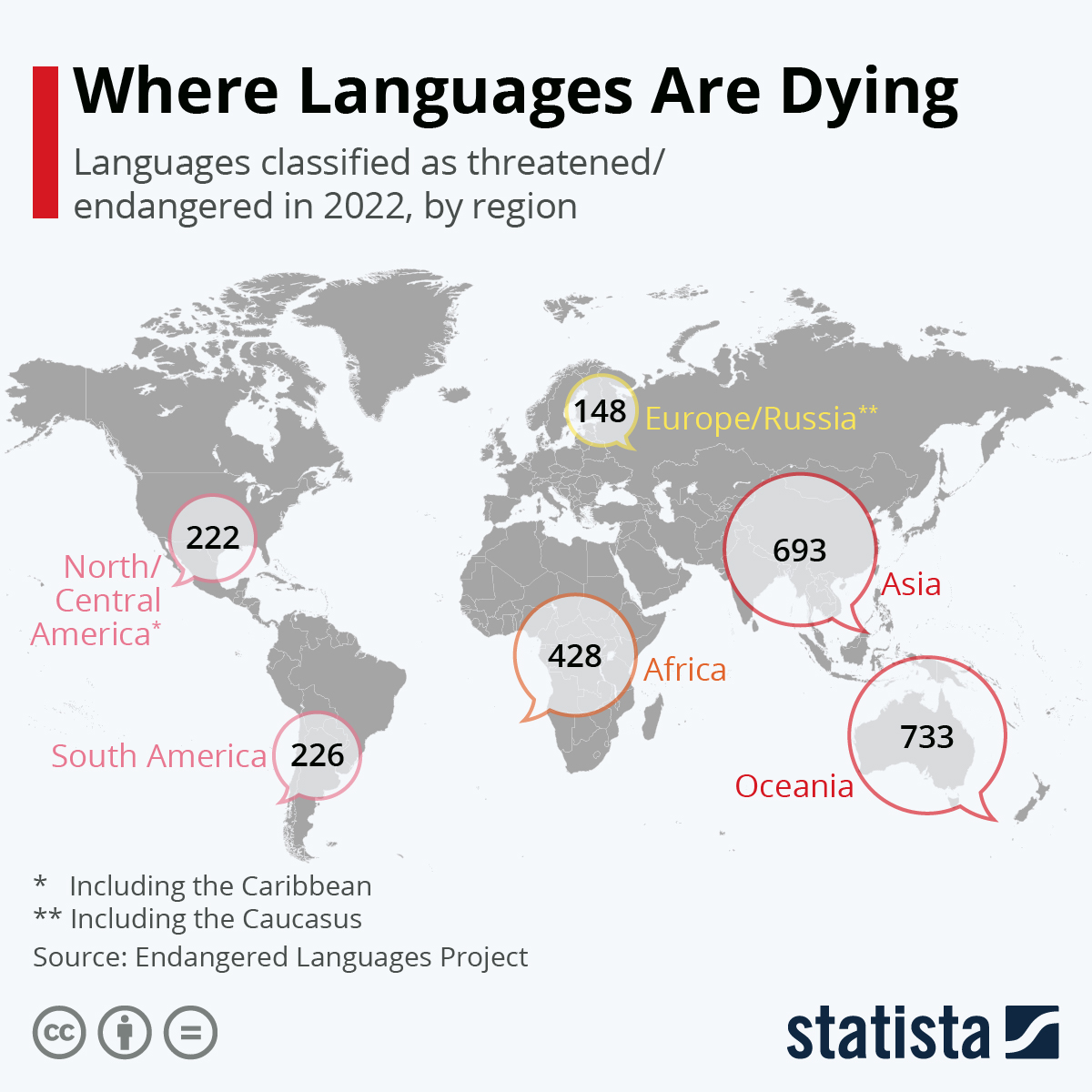As UNESCO prepares to celebrate International Mother Language Day 2022 on February 21, data from the Endangered Languages Project analyzed by Statista reveals that thousands of languages from around the world are currently in danger of dying out. The role of languages in the DNA of cultures and the importance they hold as frameworks upon which our societies develop, cannot be overstated.
There are many reasons for languages dying, but there are few cases which shouldn't be treated with a degree of sadness and without acknowledgement of what has been lost. Languages evolve to reflect the environment in which they are applied, as well as the people and the cultures that are utilizing and adapting them as time passes by.
As our infographic shows, Oceania is the region with the most languages classified as threatened or endangered to some degree (733). Asia is home to a similarly high level of at-risk languages (693), while Africa may also be close to losing some 428 mother tongues. The Americas and Europe combine to make a total around the 2,500 mark at the start of 2022.
Globalization is a significant killer of languages, as a 2014 research paper by Amano et al. states: "The dominating effect of a single socioeconomic factor, GDP per capita, on speaker growth rate suggests that economic growth and globalization are primary drivers of recent language speaker declines (mainly since the 1970s onwards), for instance, via associated political and educational developments and globalized socioeconomic dynamics".





















